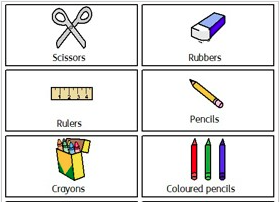Welcome to the latest IncludED blog.
Have you ever wondered what Widgit is?
Let's find out!


Widgit is simply drawn colourful symbols uniquely designed to illustrate a single concept in a clear and concise way.
There have been some recent Widgit updates and positive feedback about hidden gems in the Widgit series of resources.
Sue White from Widgit was recently interviewed at the CENMAC Communication Works event.
Click the image below to watch the video.

For more information and video highlights of the CENMAC conference please visit the LGfL Cenmac update site here.
Traditional use of Widgit
Many schools will use the Widgit symbols traditionally for:
But did you know that they also cover many areas, beyond the curriculum, that learners with SEND can find challenging such as Keeping Safe, Communication, Sequencing, Behaviour, and aspects of Time (such as the use of calendars or visual daily routine timelines)?
Communication Friendly Environments
One aspect of the resource that schools find beneficial and a genuine time saver is the CFE (Communication-Friendly Environments) aspect and school starter pack.
Located within the classroom resources page this gives you labels and door signs, notices, and other time-saving resources.



Widgit Case Study
But how can we use Widgit effectively across the school landscape?
The IncluED team recently worked on a case study with Christopher Hatton School in Camden on the Effective use of Widigit Symbols across the curriculum and beyond and
how they use Wigit across the school to support not only literacy but the whole school environment.
See here for the full case study resources
But why did Christopher Hatton School embrace the use of Widgit across the school landscape?
Claire McBride, Deputy Headteacher, explains how they use Widgit to reinforce their school shared ethos ‘informed, articulate and empowered’.
'We want the children to be articulate and we use widgit symbols to help teach vocabulary specifically and support group talk. And we want the children to be empowered, and that is through being able to participate in all the lessons without feeling marginalised or that they have needs that can't be met. And the use of this technology helps to support that aim.'
Watch this clip to find out how they support literacy using Widgit in a school that has approximately 70% of pupils with EAL needs.

Christopher Hatton supports teaching and learning across the school, using Widgits to support:
- Early readers to help remind them of their reading strategies
- Pupils editing their work as visual prompts and reminders
- Supporting consistent reading environments
- Simplifying pupils' choice of suitable texts
- Supporting a love of reading by developing informed book choices
- The design of a Widgit bookmark using symbols to encourage pupils to stop, think and understand what they are reading and develop a love of reading
- Building vocabulary
- Develop and support sentence structures and grammatical features
- Creating working word walls of changing vocabulary to support independent writing
A full explanation of this innovative use of Widgit can be found in the clip below.

Widgit Help Guide
The IncudED team has provided a clear and concise help guide to help you search and download symbols and resource packs, which can be found here.

Widgit online
As well as access to Widgit via your LGfL log-in, there is a fuller range of symbols (over 20,000 and growing) via Widgit online, which is a cloud-based platform. Working with Widgit online also allows you to edit symbols for cultural reasons to make them more inclusive for today's society. Sue White from Widgit demonstrates the flexibility of Wigit online and how to access the online subscription in these clips


Remember also that LGfL schools can take out a 3-month trial of Widgit online at widgit.lgfl.net